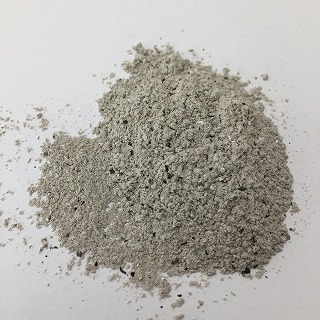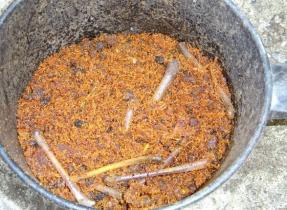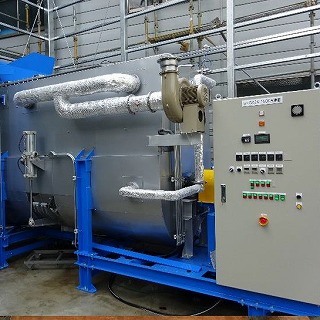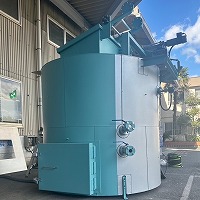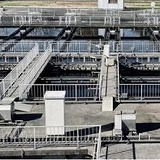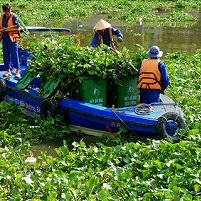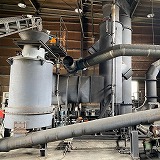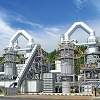Agricultural revival through fertilization of water grass/Sargassum
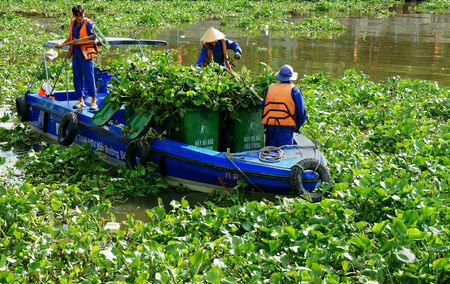
|
Water hyacinths, sargassum and other aquatic weeds spread rapidly and are pernicious aquatic weeds that negatively impact ecological adaptability, the environment, human life and health, and economic development. |
イ Water hyacinth spreading rapidly around the world
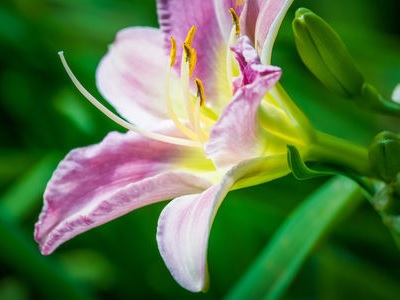

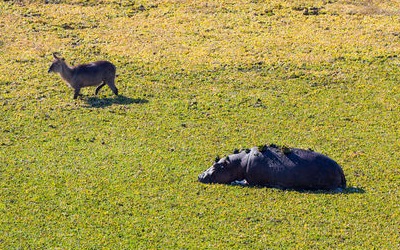
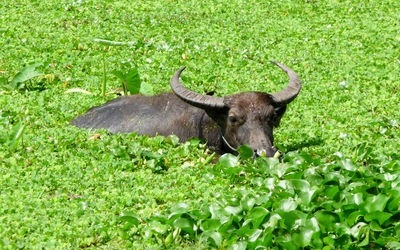
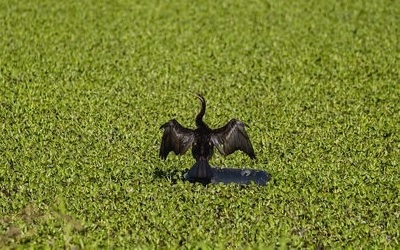
イ Current water hyacinth harvesting and drying in the sun
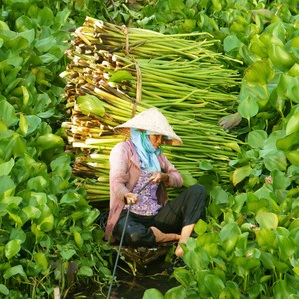
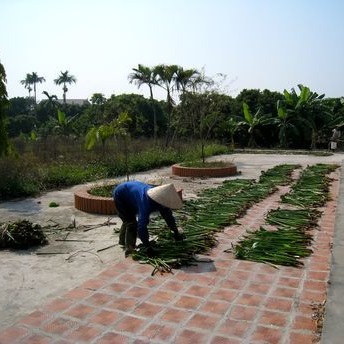
イ Alpha Gaia Effect
AlphaGaia, an active oxygen generator, is the only device in the world that can simultaneously solve the problem of water hyacinth and fertilizer shortage.AlphaGaia is a device that can ferment and powder vegetable residues, plant factory residues, waterweeds, weeds, excess sludge, chicken manure, pig manure, etc. at a rate 2 to 5 times faster than conventional systems after only one hour of active oxygen pretreatment.
For example, waterweeds have a high water content of 90-95%, and composting them by natural drying usually takes 2 to 3 years, but when treated with AlphaGaia, they can be turned into powder in 10 to 15 hours.
Currently, Lake Biwa, the largest lake in Japan, produces nearly 130,000 tons of waterweed every year, of which 6,000 tons are harvested each year, and a major project has been started to convert this waterweed into fertilizer using Alpha Gaia.
イ Project process and various benefits of using AlphaGaia
1. Reaping and collecting water hyacinths by boat2. Fertilizing water hyacinths with Alpha Gaia
3. After treatment with AlphaGaia, mix charcoal, rice bran, and bacteria.
Charcoal is a home for microorganisms and has a deodorizing effect.
Rice bran and wheat bran contain nitrogen, phosphorus, and potassium, and it has been confirmed that fermenting bacteria and substances produced by fermentation are highly effective in killing nematodes.
Then mix well once a day, and the compost will be fully mature in 5 to 10 days.
4.Families around Lake Victoria in Africa are using methane gas produced by the water hyacinth, which can be produced in increasing quantities.
Because the cell walls of water hyacinth treated with AlphaGaia are decomposed, when placed in a biogas tank, it produces a large amount of methane gas in a short period of time, making it possible to produce many times the amount of methane gas in the tanks currently in use.
5.With AlphaGaia and Stirling engines, it is possible to supply electricity to different regions
6.If CO2 reductions are certified under 3 and 5 above, they can also be sold as CO2 reduction credits (bilateral credits).
イ Alpha-Gaia's decomposition process
|
Alpha-Gaia is a system that can instantly decompose cell walls that could not be decomposed by strong acid, alkali, high temperature, or high pressure by bringing active oxygen generated by AOS and organic matter into contact with an agitator at room temperature in air and decomposing them. |


イ Two effective ways to recycle water hyacinth
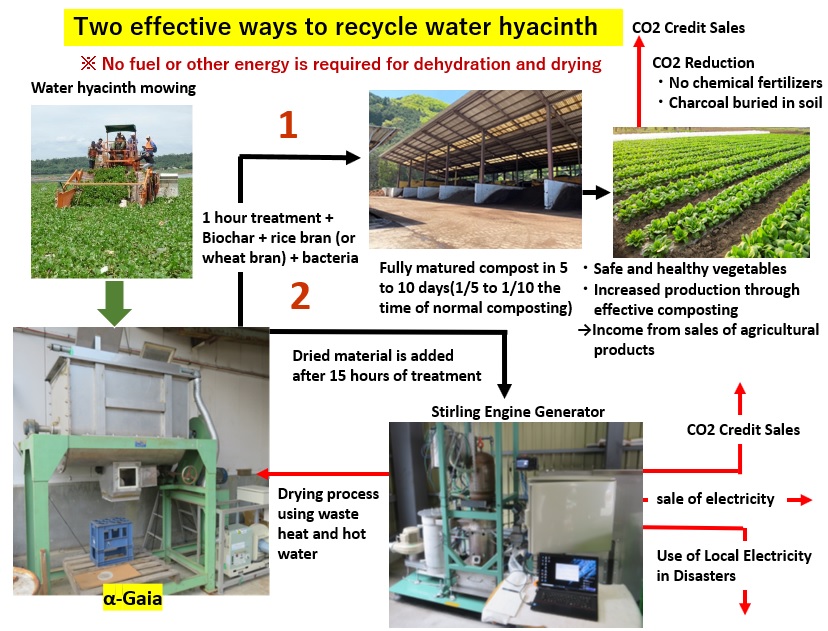
イ Active Oxygen + Fermentation → Fertilization of water hyacinth

イ Effects of composting water hyacinth
・Lakes and rivers can improve deteriorated environments・Water from water hyacinth with 90% moisture content can be evaporated without fuel
・A large amount of water hyacinth can be fully composted in a short period of time.
・Can compensate for lack of fertilizer
・Possible to increase production of crops
・Local residents will be able to eat safe farm products and become healthier.
・Contributes to environmental improvement by reducing global CO2 emissions
イ How water plants with 95% water content can be dried without energy
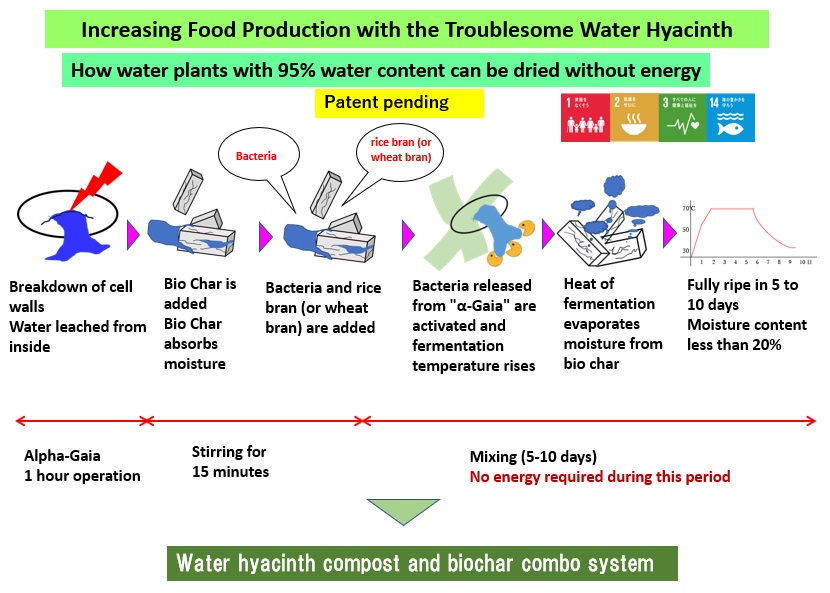
イ Japanese Agriculture and the Food Crisis
・The heavy reliance of Japanese agriculture on chemical fertilizers is now a major problem.Due to the unstable global situation in recent years, the price of chemical fertilizers has skyrocketed, and the current price of chemical fertilizers has more than doubled.
In addition, some fertilizers cannot be imported stably, and in some cases, compound fertilizers have been discontinued, resulting in inadequate supply to farmers and a potential crisis situation.
The number of organic farmers in Japan is about 0.5%, and 99.5% are conventionally cultivated, which would have a tremendous impact if chemical fertilizers are not supplied in a stable manner.
・Poultry farms are killing and destroying chickens due to avian influenza, and dairy farms are destroying cows due to increased dairy inventories, which may reduce poultry and cattle manure containing nitrogen, phosphorus, and potassium.
・Japan's food self-sufficiency rate is low at about 38%, and there are concerns about a decline in agricultural productivity as the agricultural population ages and young people move away from farming.
Furthermore, climate change has recently led to an increase in typhoons, torrential rains, and other extreme weather events, resulting in increased damage to crops.
・Over-reliance on food imports from abroad poses several problems.
First, the safety of imported food products may not be guaranteed and may cause health problems.
In addition, the reliance on imports has led to a decline in domestic agriculture, and if food imports from abroad were to stop, there is a risk of a serious food crisis
イ Lake Biwa, the largest lake in Japan, project has been started with Alpha Gaia
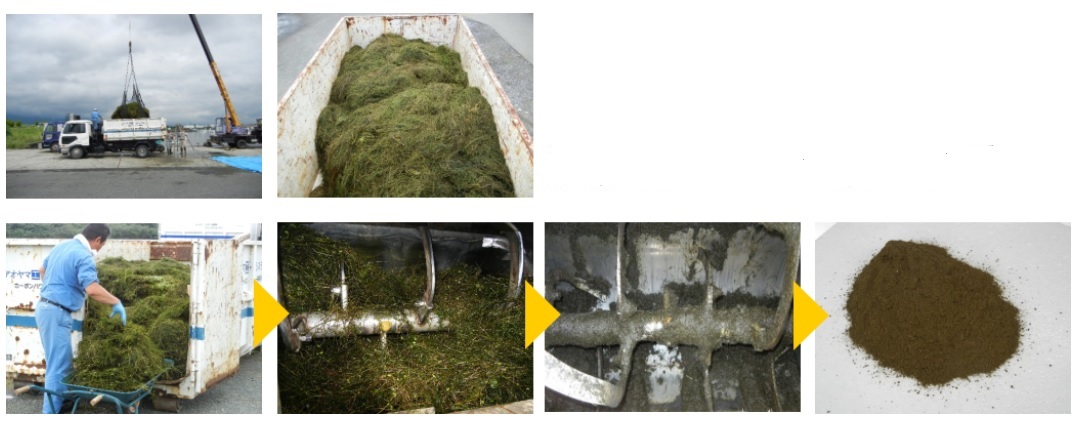
イ The effects of mixing compost and biochar are now attracting attention
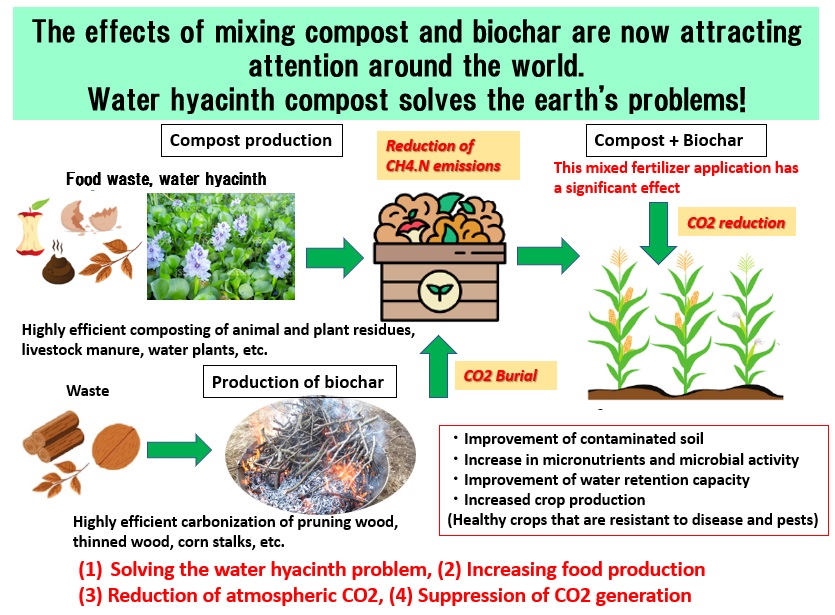
イ Main features of Alpha-Gaia
|
|
|
|
|
|
Customers who viewed this item also viewed these products
|
|
|
|
|
|
Japanese products expected to increase sales in the future
|
|
|
|
|
|
